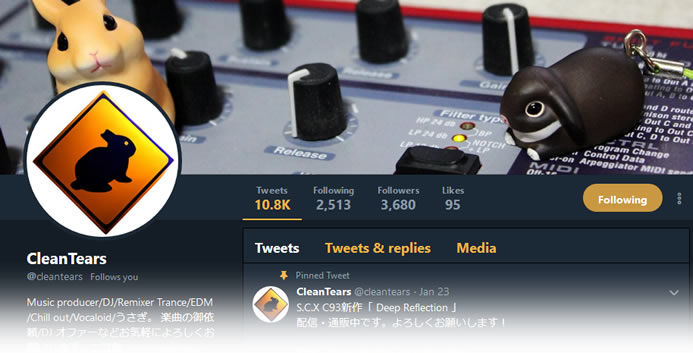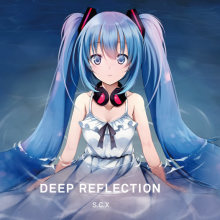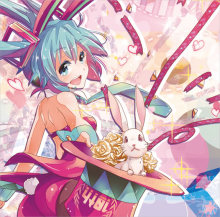
Clean Tears is one of the longest standing Vocaloid producers in the community, having created music with Hatsune Miku now for over 10 years. And despite producing music in niche genres such as Vocaloid EDM, he’s grown a worldwide following of fans and similarly aspiring artists. We’ve been following CT’s works since nearly the beginning, so we were very excited when CT accepted our request for a community contributed interview!
We gathered questions from MikuFan followers on our social media for the interview, so thank you to everyone who submitted their questions! And special thanks to @xNEOxGENESISx and @gigimiumusic for providing their translation assistance. Read the full interview below!
Examples of recent album releases by Clean Tears
MF = MikuFan
CT = Clean Tears
MF: Thank you very much again for allowing us this interview! We gathered many questions from fans overseas, and we were surprised by the amount of feedback! It seems your popularity has grown a lot a recent years! Here’s the first question:
You’re one of the longest standing Vocaloid producers in the community, with your first work with Hatsune Miku in September 2007, the song 水鏡の庭 (Garden of Mizukagami). We also know you were composing Trance and other electronic music before you used Hatsune Miku. What first inspired you to try using Hatsune Miku in your music?
Clean Tears’ first Vocaloid song “水鏡の庭” from 09/29/2007
CT: Before I was exposed to Vocaloid, I used to produce mainly instrumental music. I did produce several tracks with vocals, however I wasn’t in an environment where I could easily record vocals. From there, I found out on NicoNicoDouga that you could easily make music with vocals using Vocaloid. It’s nice in many different ways to be able to produce music with vocals, and there’s something fascinating about the vocals being different from a person. I’ve been using Vocaloid since then.
MF: Ah, so it was the difficulties of finding a singer. This is true for many other music producers as well.
You were known as the first Miku Trance producer on nicovideo. Your work has even spread overseas. You helped introduce many people to Vocaloid Trance, but also to Trance in general. What are your thoughts on that?
CT: I am happy to hear that someone thinks I have helped in spreading it, and that I have been the one introducing the genre. I simply think it is an uncommon genre, but if this is the way someone has started getting introduced to Vocaloid, I am happy to hear that.
MF: Over time, your vocal tuning style has changed from an electronic feeling, to a more clean and natural feeling. Was this change intentional, or did the change happen because you were still learning how to use the software?
CT: At the beginning I was thinking an artificial feeling was better suited to the genre, but I soon realized that it was lacking the power I wanted it to have. So I studied hard to reach a natural sound which has impact and power. Lastly, I would like to add that I always try to aim for a voice that I like.
MF: You have used other Vocaloids before to great effect (IA and Yuzuki Yukari, for example), but it’s clear you favor Miku most often. What is it about her that makes her favorable for your use?
CT: Simply because I’m the most familiar with Miku, since I have used her the longest. It is easy for me to imagine the result. Because she also has many libraries, that increases the likelihood that I will use her in my music.
MF: Because you have produced Vocaloid music for so long, some fans would like to ask what keeps you motivated to continue your work?
CT: Knowing that there’s people who listen to your music, that’s always motivating. Also I’ve been able to continue for this long because I enjoy the process fine-tuning the vocals.
MF: Are you considering using Miku V4X, or do you already own the software?
CT: I don’t own V4X. To be honest, V4X came out soon after V3 so I might have been a bit stubborn about making the change.
MF: I can see that being the case, haha.
Can you name some examples of your music software? (for example, DAW?)
CT: I use Cubase as my DAW and the synths are all well known ones. For activating Vocaloid I use Piapro Studio. Pitch edits are done on Waves Tune and a bit of Avalon vt-747sp depending how it feels.
MF: I don’t know if you heard, but your song “One Half” was featured in a recent KarenT promotional video at Snow Miku 2018 Live! How does it feel knowing your music was selected to introduce CFM’s music distribution platform?
“One Half” by Clean Tears
CT: I’m very grateful for having my music being used for promotional purpose, so I’m very happy my music was chosen.
MF: You’ve been flexible in composing amazing music in various styles, are there other genres/styles you’d like to do that you haven’t tried yet?
CT: I have been trying out different styles that came to my interest. Now I’m more interested in researching into the styles I’ve been working with, rather than challenging new genres.
MF: Ah, so improving your skill on stuff you know. We heard some of your recent Psytrance pieces, which was surprising. We’ve never seen you do Psytrance before.
Are there any artists you looks up to, or special sources of inspiration?
CT: I don’t really follow a certain artist, rather I listen to the genre of music I want to hear at that moment on services such as Beatport. I’ll listen through and then purchase the tracks I like and listen to those songs on repeat. So I think my inspiration for my music comes while I listen through that music.
MF: It’s clear that you love rabbits a lot. Do you have any pet rabbits, and if so, what are their names?
CT: Yes I’ve have pet rabbit. No matter what pet you decide to have, you’ll become attach to them, so I am that status. The rabbit’s name is “Rabbie,” a very typical name, but I often call the rabbit “Rabbie-o San”.
MF: Of all the music you have made, which song would you say is your favorite? Or if hard to choose, which one did you enjoy creating the most recently?
CT: It’s hard to choose my favorite, however out of the latest track I’ve enjoyed producing the song “Ruby”. Trance as always, but enjoyed the production of that song.
“Ruby” by Clean Tears
MF: Lastly, do you have any advice for other aspiring artists looking to explore the world of Vocaloid EDM and Trance?
CT: What I would like to share is that, it’s getting easier every year for someone to begin producing music, so I recommend to continue challenging and bring more excitement to this community.
MF: I want to say thank you for this opportunity, and also thank you for your contributions for over the past 10 years. I first discovered your works in December of 2007, and they have brought me countless hours of bliss over the years. I do my best to collect all the music you make, and I wish for the opportunity to meet you someday!
CT: Thank you for the interview, and thank you for listening for such a long time! I’m going to keep my own pace in my works, so cheers!
Clean Tears’ YouTube
Clean Tears’ Twitter
Clean Tears’ Nicovideo
Clean Tears’ albums on KarenT
More Info on Clean Tears (VocaDB)


